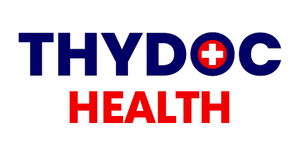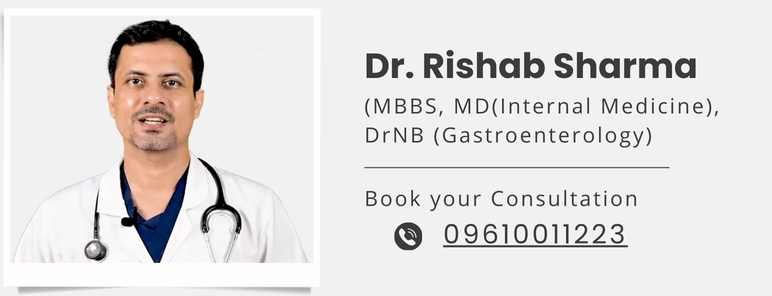By Dr. Rishab Sharma, MBBS, MD (Internal Medicine), DrNB (Gastroenterology)
The liver is one of the most hardworking organs in your body. It processes everything you eat and drink, filters toxins, and helps store energy. However, when too much fat builds up in the liver, it can lead to a condition known as fatty liver disease.
Fatty liver disease can broadly be categorized into two types: Alcoholic Fatty Liver Disease (AFLD) and Non-Alcoholic Fatty Liver Disease (NAFLD). While both involve fat accumulation in the liver, their causes and treatments differ significantly.
In this blog, we’ll break down the key differences between alcoholic and non-alcoholic fatty liver, their symptoms, causes, and how to manage or prevent them.
What is Fatty Liver Disease?
Fatty liver disease occurs when fat makes up more than 5–10% of the liver’s weight. The condition itself may not cause immediate harm, but if left untreated, it can lead to inflammation, scarring (fibrosis), or even liver failure in severe cases.
The two main types of fatty liver disease are:
- Alcoholic Fatty Liver Disease (AFLD): Caused by excessive alcohol consumption.
- Non-Alcoholic Fatty Liver Disease (NAFLD): Occurs in people who drink little to no alcohol but still develop fat accumulation in the liver.
Alcoholic Fatty Liver Disease (AFLD)
What Causes AFLD?
- Alcohol Consumption: The primary cause of AFLD is excessive alcohol intake.
- Alcohol is processed in the liver, but when consumed in large amounts, it produces harmful byproducts that damage liver cells and lead to fat buildup.
Who is at Risk?
- People who consume alcohol regularly, especially in large quantities.
- Women, as their bodies process alcohol differently, making them more prone to liver damage.
- Those with poor nutrition, as alcohol can reduce the liver’s ability to process nutrients.
Symptoms of AFLD:
AFLD often has no symptoms in the early stages. However, as the condition worsens, you may experience:
- Fatigue
- Pain or discomfort in the upper right abdomen
- Loss of appetite
- Jaundice (yellowing of the skin and eyes) in severe cases
How is AFLD Treated?
- Complete Abstinence from Alcohol: Stopping alcohol consumption is the most critical step.
- Nutritional Support: A healthy diet with adequate vitamins and minerals helps the liver recover.
- Medical Treatment: In advanced cases, medications or even a liver transplant may be required.
Non-Alcoholic Fatty Liver Disease (NAFLD)
What Causes NAFLD?
NAFLD is not linked to alcohol but is associated with lifestyle and metabolic factors such as:
- Obesity: Extra fat in the body increases the likelihood of fat accumulating in the liver.
- Type 2 Diabetes and Insulin Resistance: These conditions interfere with how the liver processes fat.
- High Cholesterol and Triglycerides: Imbalances in fats in the blood can contribute to liver fat buildup.
- Sedentary Lifestyle: Lack of physical activity increases the risk of NAFLD.
Who is at Risk?
- Overweight or obese individuals.
- People with metabolic conditions like diabetes or high cholesterol.
- Those with a diet high in sugar, processed foods, or saturated fats.
Symptoms of NAFLD:
Similar to AFLD, NAFLD is often silent in its early stages but can cause:
- Persistent fatigue
- Mild discomfort or fullness in the upper right abdomen
- Unexplained weight loss (in severe complicated cases)
How is NAFLD Treated?
- Weight Loss: Losing 5–10% of body weight can significantly reduce liver fat.
- Dietary Changes: A diet rich in fruits, vegetables, whole grains, and lean proteins is key.
- Regular Exercise: Physical activity helps burn fat and improves liver health.
- Medical Support: In some cases, medications to manage underlying conditions like diabetes or cholesterol may be prescribed.
Key Differences Between AFLD and NAFLD
|
Feature |
Alcoholic Fatty Liver Disease (AFLD) |
Non-Alcoholic Fatty Liver Disease (NAFLD) |
|
Cause |
Excessive alcohol consumption |
Poor lifestyle, obesity, diabetes, etc. |
|
Alcohol Involvement |
Directly caused by alcohol |
Not related to alcohol |
|
Risk Factors |
Alcohol abuse, poor nutrition, gender |
Obesity, diabetes, high cholesterol |
|
Treatment |
Abstaining from alcohol, nutritional support |
Lifestyle changes, weight loss, medications |
|
Progression |
Can lead to alcoholic hepatitis and cirrhosis |
Can lead to NASH, fibrosis, or cirrhosis |
What Happens if Fatty Liver is Left Untreated?
Both AFLD and NAFLD can progress to more severe stages if not managed properly:
- Liver Inflammation: Fat in the liver can cause inflammation, leading to pain and swelling.
- Fibrosis: Repeated damage to the liver can result in scar tissue formation.
- Cirrhosis: Extensive scarring can impair liver function and lead to complications like liver failure or cancer.
How to Prevent Fatty Liver Disease?
For AFLD:
- Limit Alcohol Intake: Stick to moderate drinking guidelines or abstain entirely if you’re at risk.
- Healthy Nutrition: Avoid malnutrition by consuming a balanced diet rich in vitamins and minerals.
For NAFLD:
- Maintain a Healthy Weight: A balanced diet and regular exercise can prevent obesity-related liver fat.
- Control Blood Sugar: Managing diabetes and insulin resistance reduces the risk of NAFLD.
- Avoid Sugary and Processed Foods: Replace sugary drinks and processed snacks with whole, nutrient-dense options.
Why Choose Dr. Rishab Sharma for Fatty Liver Treatment?
Dr. Rishab Sharma, a leading gastroenterologist in Jaipur, specializes in diagnosing and treating both alcoholic and non-alcoholic fatty liver disease. His expertise ensures:
- Accurate diagnosis through advanced imaging and blood tests.
- Personalized treatment plans tailored to your specific needs.
- Long-term support for lifestyle and dietary modifications.
Final Thoughts
Understanding the differences between alcoholic and non-alcoholic fatty liver disease is crucial for identifying risk factors and seeking timely treatment. Both conditions can be managed and even reversed in their early stages with the right care and lifestyle changes.
If you’re experiencing symptoms like fatigue, abdominal pain, or jaundice, don’t ignore them. Schedule an appointment with Dr. Rishab Sharma, your trusted liver specialist in Jaipur, and take the first step towards better liver health.
FAQs
Q1: Can fatty liver go away on its own?
In some cases, early-stage fatty liver can improve with lifestyle changes, such as weight loss and a healthy diet.
Q2: Is fatty liver reversible?
Yes, fatty liver is reversible in its early stages with proper management.
Q3: Can non-drinkers develop fatty liver?
Yes, non-drinkers can develop NAFLD due to factors like obesity, diabetes, or a high-fat diet.
Q4: How do I know if I have fatty liver?
Symptoms may be absent in early stages. A doctor can diagnose fatty liver through blood tests, ultrasounds, or a FibroScan.

